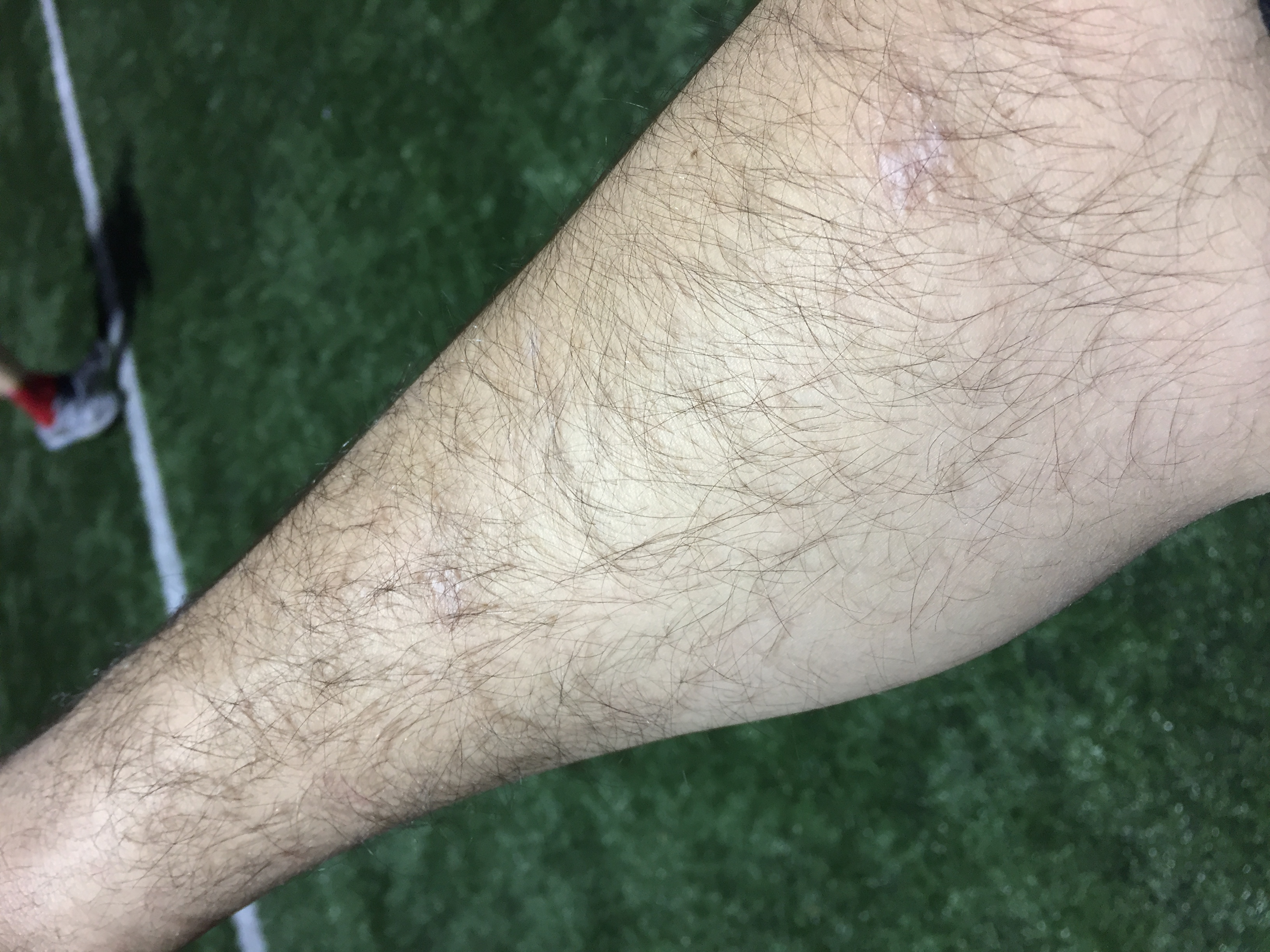
This study of the effects of acetone on skin was conducted at the Johns Hopkins Hospital Dermatology Office. Acetone has a clinical dermatology application, so it is important to understand how acetone affects various individuals.
The study coordinator explained the purpose of the research and informed me that the invasive aspect of the study would be two skin biopsies on my forearm. I had never had a skin biopsy before, so I wasn’t sure what to expect besides the anecdotes offered by the study coordinator. However, we completed the necessary paperwork, and I signed the consent form.
The study coordinator brought me into a normal looking examination room. She prepared the materials and tools needed for the study. From that point on, a dermatologist conducted the study with me. He rubbed a spot on my arm with acetone, the substance commonly known as a nail polish remover, for 5 minutes at a time. This is a long time when someone is rubbing a cotton ball on you! I think it seemed like a long time to him to as well. We did about 5 sessions of this with breaks in between. During this process they had a fan running in the room so I wouldn’t get sick from the acetone. The smell wasn’t strong to begin with, so I was fine.
After each session, I was asked to say if the location where my skin had been rubbed hurt, burned, felt agitated, etc., rating the discomfort on a scale from 1-10. I rated the discomfort around 2 for most of the questions, so I was not very bothered by the acetone. The dermatologist rubbing my arm was more uncomfortable than the acetone itself, but some people may be more irritated by the acetone on their skin. Answering why some individual’s skin is irritated by acetone was a goal of the research study, so collecting a sample of skin to further analyze was important.
The dermatologist drew two small circles on my forearm about six inches apart, one on a spot that had been rubbed with acetone and one on a spot that had not been touched. He then numbed both areas with Novocaine and cut and removed little circles of my skin with a special device. It wasn’t painful, but it felt very weird when he did it. I got 1 stitch in each location, and I can still see some light scars, which is always welcome for me.
I never had a skin biopsy before, but I’m glad my first time was for science! I was paid $40 for about 2 hours of my time and a little skin.
This study was conducted at the Johns Hopkins Hospital Dermatology Office. The researchers were interested in the effects of acetone on skin. Acetone has a clinical dermatology application, so it is important to understand how acetone affects various individuals.
I was explained the study, and then I signed the consent form. The invasive part of the study was 2 skin biopsies on my forearm. I had never had a skin biopsy before, so it was a new experience.
After the study coordinator completed the necessary paperwork, a dermatologist conducted the study with me. He rubbed a spot on my arm with acetone, the substance commonly known as nail polish remover, for 5 minutes at a time. This is a long time when someone is rubbing a cotton ball on you. I think it seemed like a long time to him as well.
After the rubbing I was asked if the location of where my skin was being rubbed hurt, burned, felt agitated, etc., on a scale of 1-10.
They had a fan running in the room so I wouldn’t get dizzy or sick from inhaling the acetone. It wasn’t strong to begin with, so I was fine.
Then they drew small circles on my forearm about 6 inches apart. Then they filled the area with Novocain and cut and removed little circles of my skin. It wasn’t painful but it felt very weird when they did it. I got 1 stitch in each location. I can still see some light scars.
I never had a skin biopsy before, but I’m glad my first time was for science. They used a spot the acetone was rubbed on and a spot they did not have any acetone rubbed on so they could further investigate different individuals’ reactions to acetone.